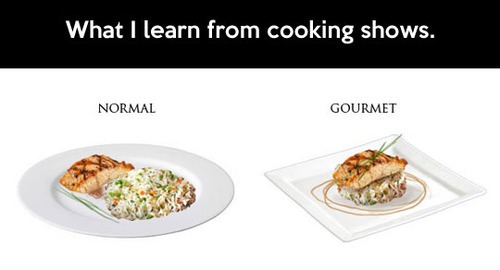As you probably know by now, I’m obsessed with what makes some training courses absolutely amazing, while others limp along the road of mediocrity.
As amazing trainers, dedicated to excellence in teaching, we want our trainees to leave our classes ready to implement new things! Equipped and excited!Roadmap in hand, and enthusiasm to boot!
The problem is, we often teach strategy, and overlook state.
What does this mean?
Let me give you an example.
I often teach classes on how to manage performance. I teach a lot of managers, and they have an ongoing challenge with getting staff to perform as expected. It’s frustrating, and managers want a better way!
The truth is, any one of them could grab their smartphone and say, “how do I manage employee performance?” and they would instantly get a list of meaningful strategies for managing performance.
Ok- just for fun, I just did that search and I came up with at least 5 great articles in a nanosecond.
I looked into each of these articles and sure enough, tons of GREAT strategies for managing performance!
And don’t get me wrong, having a great strategy is, well, GREAT!
But I have found that there is something MORE…
The real issue, when I probe a little further, is that most of these managers are P.O.d about poor performance. They are honestly at their wits end. They have tried every strategy, over and over again, and they have already worked hard to be positive and provide guidance and tools, etc.
It’s not a lack of strategy that is getting in their way…
It’s their state of mind.
- They feel angry and judgmental.
- Sometimes, they feel that the employee is purposefully doing this tothem! It’s personal!
And no one is going to be a great performance manager, when they are in a judgmental state of mind.
To provide a transformational (A.K.A. Amazing!) training experience, we have to first get under the surface and expose that state of mind that is subtly poisoning every strategy that the manager employs.
So- to complete my example, one of the first things I do in my Managing Performance class, is to connect with that deep frustration that comes from “having tried everything.”
Using experiential exercises, I get them into that frustrating state of mind, and then I help them TRANSFORM IT FOR THEMSELVES.
I provide empathy for how frustrating it can be, and then I help them understand that their mindset is part of the challenge.
Finally, we build the bridge so they can understand how the employee is feelingwhen he or she is underperforming.
And now, voila!
The trainee has what I like to call an, “A-HA Experience!”
The trainee can see the whole system (including their own state of mind) and not just a set of strategies.
They get it.
They see it differently.
Now, can I ensure that they retain this sense of excitement and enthusiasm?
Well, I can’t guarantee what will happen when they leave the room, but I CAN set them up for success by making them practice a performance management interview while they are in an open and helpful (not frustrated and judgmental) state of mind.
I can also give them a new performance management roadmap which includes the very first step– “Get in the right state of mind for coaching your employee. Get out of judgment, and find your empathy!”
So- what’s the most important take-away from this article?
- Understand the State of Mind that is preventing your trainee from simply implementing any strategy they might be able to find on their smartphone.
- Address that FIRST.
- THEN work with strategy…
- and you will be AMAZING!!
Claire








 RSS Feed
RSS Feed